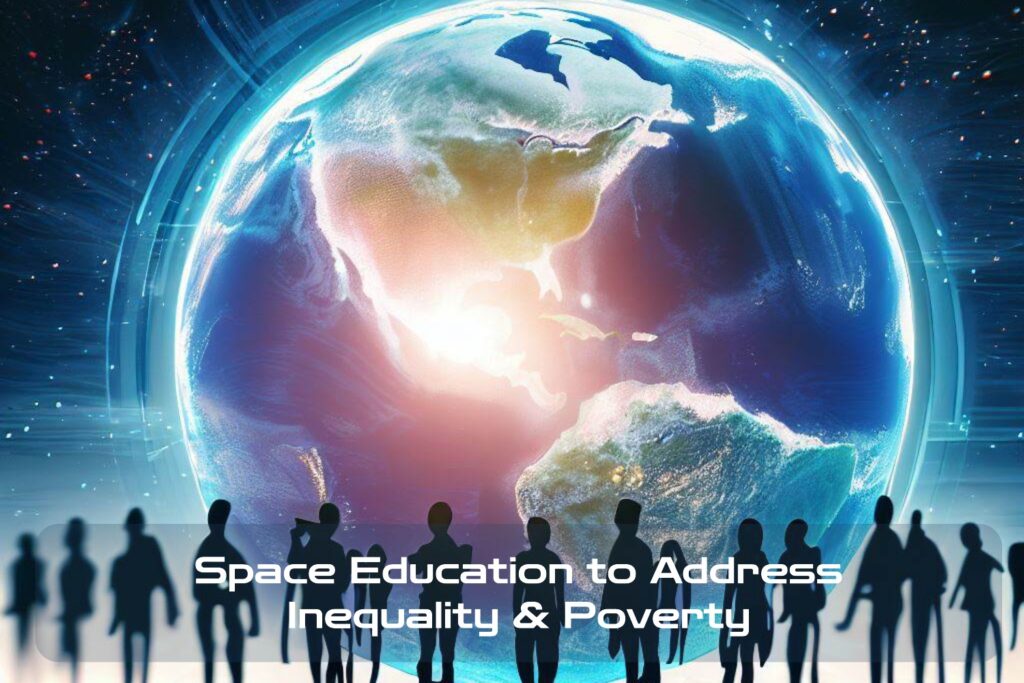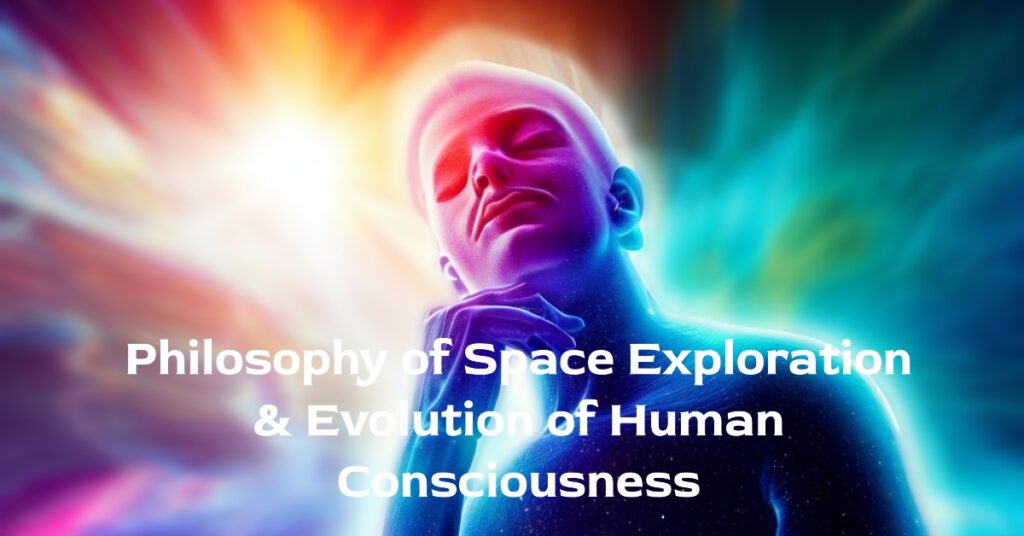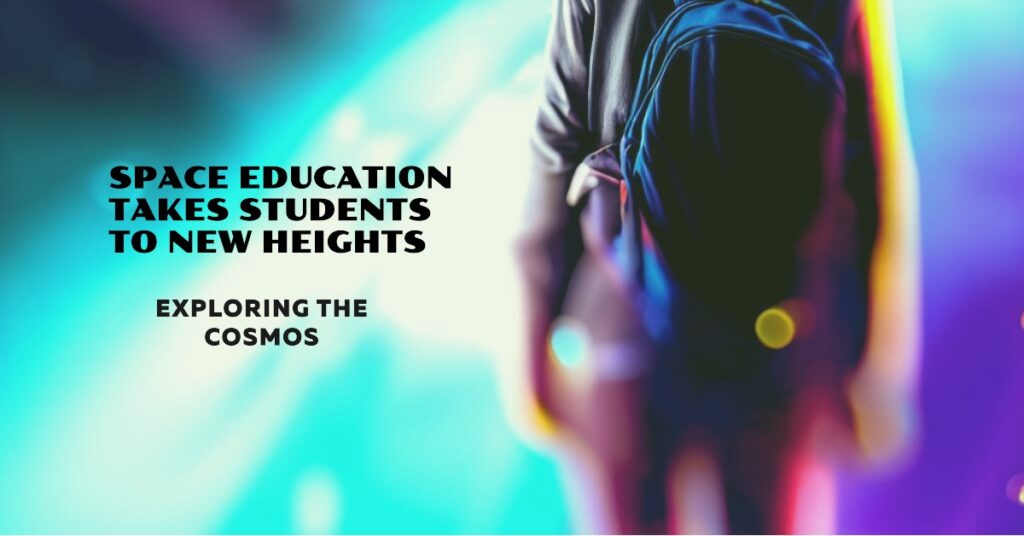Unlocking the Power of Space Education to Address Societal Issues
What is Space Education?

Space education involves the study of space and its exploration. It covers a range of topics, including astronomy, astrophysics, space missions, and rocket science.
While it’s commonly associated with training astronauts or preparing scientists for jobs at NASA or similar organizations, space education has much broader applications. It can be used to address complex societal issues such as poverty and inequality.
The Potential of Space Education
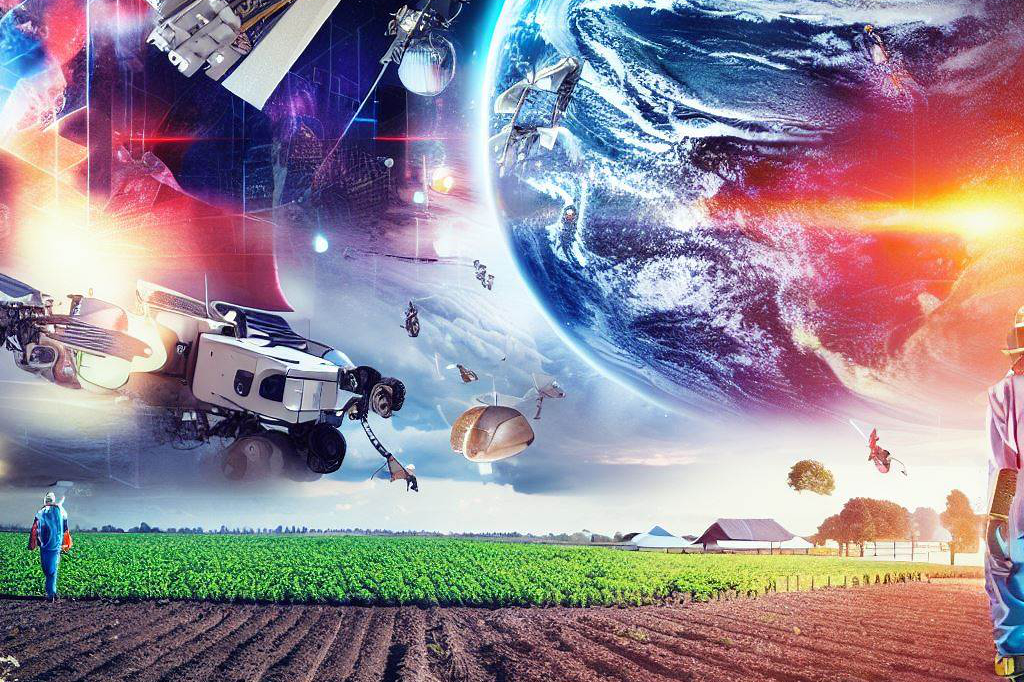
Space technology has advanced rapidly in recent years and has the potential to revolutionize how we live our lives on Earth. By leveraging this technology, we can explore new frontiers in addressing large-scale problems such as food insecurity, lack of access to healthcare, inadequate disaster response infrastructure, and many others.
Space education opens doors for individuals from underprivileged backgrounds who may not have had access to these opportunities otherwise. With proper training in areas such as aerospace engineering or satellite communications technology, they can become valuable contributors to projects designed to address societal issues.
Applications of Space Education

One example of how space education is being used is through satellite remote sensing technologies that are helping farmers increase crop yields by providing up-to-date information on temperature changes or soil moisture levels. This helps farmers make more informed decisions about when to plant crops and when to irrigate them – ultimately improving food security in communities around the world.
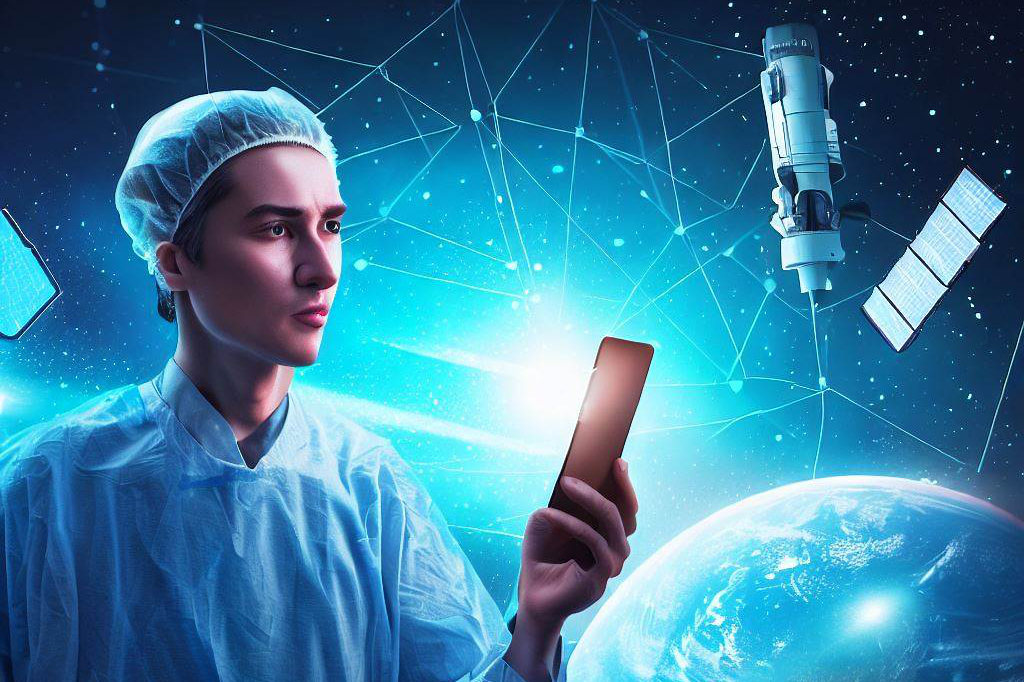
Another example is low-cost satellite communication technologies that help connect people living in remote areas with vital health services. For example, a health worker could use a mobile app on their smartphone connected via satellite communications systems for telemedicine consultations with patients living hundreds of miles away.
It’s clear that space education has enormous potential beyond traditional astronautical endeavors. We must continue expanding our understanding and usage of this field if we are going to address some of the world’s most pressing problems.
The State of Poverty and Inequality in Today’s World
Numbers Don’t Lie: Shocking Statistics on Poverty and Inequality
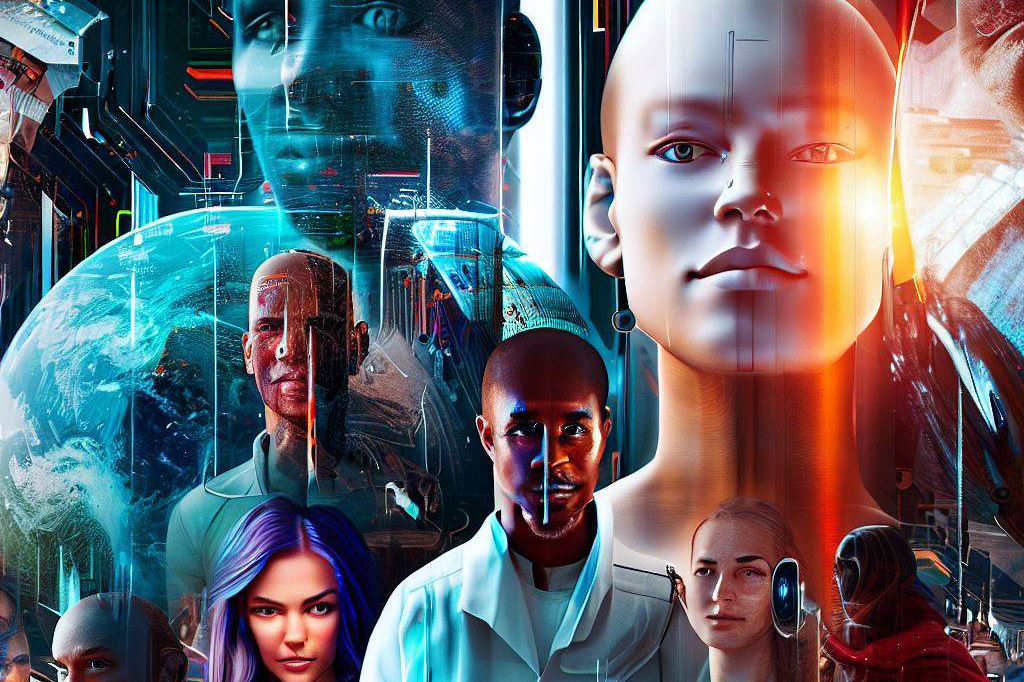
Poverty and inequality are two pervasive issues that affect people all over the world. According to the 2020 World Bank report, around 9.2% of the world’s population lives in extreme poverty, which is defined as earning less than $1.90 per day.
That means that nearly 700 million people worldwide are struggling to meet their basic needs for survival, such as food, shelter, and clean water. Moreover, wealth and income disparities continue to grow both within and between countries.
The top 1% of the global population owns approximately 44% of total global wealth, while the bottom half only possesses about 1%. Income inequality has also been shown to have negative implications for social mobility, health outcomes, education attainment, political stability, and even economic growth.
Real-world Examples of Poverty and Inequality
The effects of poverty and inequality can be seen not just in statistics but also in everyday life experiences. For instance, in sub-Saharan Africa, where more than half of its residents live below the poverty line, there is a high prevalence of malnutrition among children under five years old due to inadequate access to nutritious food.
In developed countries like the United States, with a population estimated at around 331 million people, a study found that blacks are twice as likely as whites to live below the poverty line because they experience worse educational opportunities early on in life, which leads them towards lower paying jobs compared to their non-black counterparts. These problems compound each other over time, leading individuals who experience them to face systemic challenges that limit their upward mobility prospects based on their background rather than their skillset or merit alone.
The Ripple Effects on Society
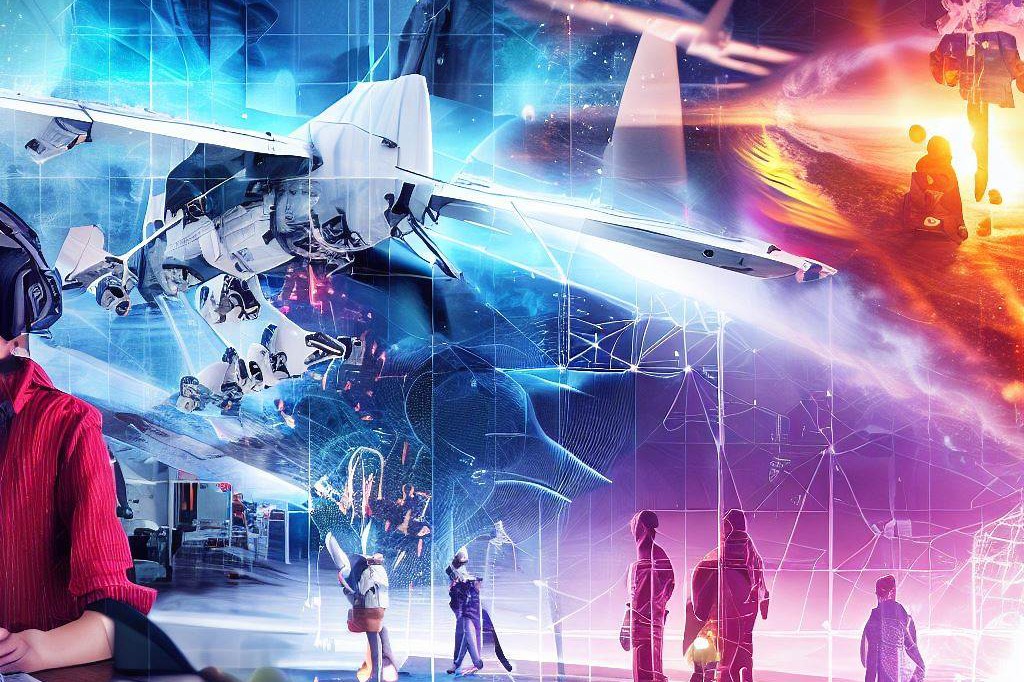
Poverty is not an isolated crisis; it affects society at large by perpetuating ongoing cycles of disinvestment and underdevelopment as a result of fewer resources being available to improve infrastructure and services like health care, education, and housing. Moreover, inequality creates economic instability by shifting power away from the majority of people towards an elite few who hold outsized influence over political decision making. Inequality also fosters social division and tension between different groups, leading to interpersonal conflicts or even violence in more extreme cases.
When individuals are struggling to make ends meet, they may feel overlooked or marginalized by society, which can lead them to take desperate measures that harm the society around them in turn. These factors perpetuate a vicious cycle where those affected by poverty and inequality face systemic barriers that create vast opportunity gaps that hinder their livelihoods while high-income individuals enjoy a disproportionate share of resources that enable them to thrive.
The Benefits of Space Education
Space education is not just about learning about space and the universe. It has the potential to provide opportunities for individuals from disadvantaged backgrounds, enabling them to acquire new skills, knowledge, and perspectives that can greatly enhance their lives. By providing access to space education, we can level the playing field and help disadvantaged communities build a better future.
One of the key benefits of space education is that it exposes students to cutting-edge technology and scientific research. This experience can inspire students to pursue careers in science, technology, engineering, or mathematics (STEM) fields.
For example, NASA’s internship program provides opportunities for high school and college students from diverse backgrounds to gain valuable work experience in STEM-related fields. Furthermore, space education can also help address societal issues such as food security, healthcare, and disaster relief.
The use of space technology has already shown great potential in these areas. For instance, satellite imagery is being used by organizations like Feeding America to monitor crop yields and identify food deserts – areas where access to healthy food is limited – so that they can distribute resources more effectively.
The Potential for Space Technology

The benefits of space education extend beyond individual skill development; they can also contribute towards solving some of society’s most pressing issues, such as food security, healthcare, and disaster relief. Space technology offers unique capabilities that can be leveraged to address these problems.
For example, satellites are able to collect data on climate patterns, which helps improve weather forecasting accuracy while allowing us prepare for disasters more effectively. In terms of healthcare service delivery, there are many ways that space technology could be applied, from telemedicine (remote diagnosis between patients and doctors) to remote surgery using robotics systems controlled by expert surgeons located elsewhere on earth.
We need more focus on space education and technology to find new ways of tackling societal problems. By investing more in space education, we can equip people with the tools they need to solve the challenges that lie ahead.
Space Education Initiatives Addressing Poverty and Inequality
Scholarship Programs for Underprivileged Students

One of the most effective ways to address poverty and inequality through space education is by providing scholarships to underprivileged students. These scholarships can pave the way for talented students who may not have otherwise had the opportunity to pursue a career in STEM fields.
For example, the Space Foundation offers scholarships to high school seniors who have demonstrated academic excellence and an interest in pursuing a career in space-related fields. Through their scholarship programs, they aim to support students from diverse backgrounds and provide opportunities for those who may not have had access to similar programs before.
NASA also offers internships and fellowships specifically designed for underrepresented communities. Their Minority University Research and Education Program (MUREP) provides funding for research projects and allows students from minority-serving institutions to participate in NASA research initiatives.
Training Programs for Marginalized Communities
In addition to scholarships, training programs can be an effective way of addressing poverty and inequality through space education. These programs provide individuals with the skills necessary to succeed in space-related industries while also contributing towards wider societal goals such as reducing unemployment rates or improving healthcare services.
For instance, The Mars Society runs a program called ‘Project Possum’ which trains people from diverse backgrounds, such as pilots, scientists, engineers, educators, photographers, etc., into becoming astronauts or citizen scientists. The program aims to create a pool of skilled professionals who can contribute to future space missions while also promoting diversity within the field.
The International Space University’s (ISU) Space Studies Program (SSP) is another example of a training program that addresses poverty and inequality through space education. The SSP provides participants from all over the world with an interdisciplinary education on topics related to space exploration.
This program equips individuals with knowledge about everything related to outer-space including legal, technical, and policy considerations. By training individuals from diverse backgrounds, ISU is helping to create a more inclusive space industry.
Successful Outcomes from these Initiatives
Scholarship and training programs have been successful in increasing access to space education for underprivileged and marginalized communities. According to the Space Foundation, their scholarship program has awarded over $2 million in scholarships since its inception in 1984. Many of their recipients have gone on to pursue successful careers in space-related fields.
Similarly, NASA’s MUREP program has seen significant success in increasing diversity within the space industry. In 2019 alone, they awarded over $32 million to minority-serving institutions across the United States.
The Mars Society’s Project Possum has also been highly successful at creating a more diverse pool of astronauts. The program has trained over 150 citizen scientists from diverse backgrounds who have gone on to participate in research that is advancing our understanding of outer-space.
Overall, these initiatives demonstrate that space education can be an effective tool for addressing poverty and inequality if targeted towards underprivileged or marginalized communities. Through scholarships and training programs, individuals are given access to opportunities that were previously unavailable to them while promoting diversity within the STEM fields.
Challenges and Limitations
Potential Obstacles to Implementing Space Education Initiatives in Impoverished Areas or Communities Facing Inequality

While space education provides an innovative solution to address societal issues, there are potential obstacles that need to be addressed. One of the major challenges is the lack of access to technology and resources in impoverished areas or communities facing inequality. It may be difficult for individuals from these areas to participate in space education programs due to limited internet connectivity, a lack of equipment or resources, and inadequate funding.
Additionally, some communities may have cultural or religious beliefs that are not aligned with space education initiatives. Another obstacle is the lack of awareness about space education programs in these areas.
Many individuals may not even know about the opportunities available through these initiatives due to a lack of advertising or outreach efforts. This can also lead to a lack of interest from potential participants, further hindering the success of such programs.
There may be bureaucratic hurdles involved with implementing space education initiatives in impoverished areas or communities facing inequality. Local governments or organizations may have different priorities and goals, and it can be challenging for outside entities to collaborate effectively with them.
Addressing Concerns About Cost-Effectiveness and Sustainability of Using Space Technology To Address Societal Issues
Critics argue that using space technology to address societal issues is not cost-effective or sustainable. They argue that these initiatives require significant investment, which could be better spent on more traditional approaches such as direct aid or infrastructure development.
However, proponents argue that while initial costs may be high, long-term benefits outweigh them significantly. Space technology can provide solutions that are more efficient than traditional methods, such as using satellite data analysis for disaster response efforts.
Additionally, by investing in space technology research and development now, we can pave the way for future innovations that will help us solve problems we don’t even know exist yet. Another argument for the sustainability of space technology is that it can drive economic growth and development.
Space education initiatives can provide local populations with the skills and knowledge necessary to participate in the growing space industry, creating new job opportunities and fostering economic growth in impoverished areas or communities facing inequality. Overall, while concerns about cost-effectiveness and sustainability are important to consider, they should not hinder us from investing in innovative approaches like space education to tackle complex societal problems.
Final Thoughts
Throughout this article, we have explored the concept of space education and how it can be used to address societal issues such as poverty and inequality. We have seen how space education provides opportunities for underprivileged individuals to receive quality education and training, which can empower them to become active members of society. Additionally, we have highlighted specific programs that leverage space technology to tackle complex problems such as food insecurity, healthcare accessibility, and disaster relief.
It is clear that innovative approaches like space education are essential in addressing societal issues. While traditional educational systems may not always be accessible or effective in certain communities, space education offers unique opportunities for individuals from all walks of life.
Through the use of cutting-edge technology and interdisciplinary collaboration, we can work towards creating a more equitable society. As we move forward into an increasingly interconnected world, it is crucial that we continue to prioritize initiatives that aim to improve the lives of those who are most vulnerable.
By investing in programs that use space education to address poverty and inequality, we can create a brighter future for generations to come. Let us embrace the power of innovation and work together towards a more just and equitable world.
FAQs – Space Education for Addressing Societal Inequality and Poverty
1. What is space education?
– Space education involves the study of space and its exploration, covering topics such as astronomy, astrophysics, space missions, and rocket science.
– It goes beyond training astronauts and scientists for NASA, as it has broader applications in addressing societal issues like poverty and inequality.
2. How can space education address societal issues?
– Space technology has rapidly advanced, offering solutions to large-scale problems like food insecurity, lack of healthcare access, and inadequate disaster response infrastructure.
– By leveraging space education, individuals from underprivileged backgrounds can gain training in aerospace engineering or satellite communications technology to contribute to projects addressing societal issues.
3. What are some applications of space education?
– Satellite remote sensing technologies aid farmers in increasing crop yields by providing real-time information on temperature changes and soil moisture levels.
– Low-cost satellite communication technologies help connect people in remote areas with vital health services through telemedicine consultations.
– Space education expands beyond traditional astronautical endeavors, helping address pressing global problems.
4. What are the current statistics on poverty and inequality?
– Approximately 9.2% of the world’s population lives in extreme poverty, earning less than $1.90 per day.
– Nearly 700 million people worldwide struggle to meet their basic survival needs, such as food, shelter, and clean water.
– Wealth and income disparities continue to grow within and between countries, affecting social mobility, health outcomes, education attainment, and political stability.
5. How do poverty and inequality impact society?
– Poverty perpetuates cycles of disinvestment and underdevelopment, limiting resources available for improving infrastructure, healthcare, education, and housing.
– Inequality shifts power towards a few elite individuals, destabilizing economies and fostering social division, leading to conflicts and violence in extreme cases.
– These factors create systemic barriers, hindering upward mobility and exacerbating opportunity gaps for those affected by poverty and inequality.
6. What are the benefits of space education?
– Space education provides opportunities for individuals from disadvantaged backgrounds to acquire new skills, knowledge, and perspectives for a better future.
– Exposing students to cutting-edge technology and scientific research inspires them to pursue careers in STEM fields.
– Space education contributes to addressing societal issues like food security, healthcare, and disaster relief through the application of space technology.
7. How can space technology contribute to addressing societal issues?
– Satellites collect data on climate patterns, improving weather forecasting and disaster preparedness.
– Space technology enables telemedicine and remote surgery, expanding healthcare services to remote areas.
– Investing in space education and technology opens new possibilities for solving societal problems and equipping individuals with the tools they need.
8. What initiatives are using space education to address poverty and inequality?
– Scholarship programs provide opportunities for underprivileged students to pursue careers in space-related fields.
– Training programs equip marginalized communities with skills for space-related industries, contributing to wider societal goals.
– Successful outcomes from these initiatives include increased diversity in the space industry and successful careers for scholarship recipients.
9. What are the challenges and limitations of implementing space education initiatives?
– Limited access to technology and resources in impoverished areas hinders participation in space education programs.
– Cultural or religious beliefs may pose obstacles to space education initiatives.
– Lack of awareness and advertising of these programs in underprivileged areas can limit participation.
– Bureaucratic hurdles and differing priorities among local governments and organizations can impede effective collaboration.
10. Is using space technology cost-effective and sustainable for addressing societal issues?
– Critics argue about the initial costs of space technology initiatives, suggesting traditional approaches like direct aid or infrastructure development.
– Proponents emphasize the long-term benefits and efficiency of space technology solutions.
– Space education can drive economic growth, create job opportunities, and foster development in impoverished areas.
TL;DR …
– 🚀 Space education involves the study of space and its exploration, going beyond training astronauts and scientists for NASA.
– 🌍 Space technology has the potential to revolutionize how we address large-scale problems such as food insecurity and inadequate healthcare access.
– 🌱 Space education opens doors for individuals from underprivileged backgrounds, providing training in aerospace engineering and satellite communications technology.
– 🌽 Satellite remote sensing technologies help farmers increase crop yields and improve food security worldwide.
– 📡 Low-cost satellite communication technologies connect people in remote areas with vital health services through telemedicine consultations.
– 💪 Space education has enormous potential beyond traditional astronautical endeavors and can be used to address pressing global problems.
– 💔 Poverty and inequality affect people worldwide, with nearly 700 million people struggling to meet basic survival needs.
– 🌍 Wealth and income disparities continue to grow within and between countries, impacting social mobility, health outcomes, education attainment, and political stability.
– 🥘 Poverty and inequality contribute to malnutrition in sub-Saharan Africa and hinder educational opportunities for marginalized groups in developed countries.
– 🌊 Poverty perpetuates ongoing cycles of disinvestment and underdevelopment, while inequality fosters social division and economic instability.
– 🌟 Space education provides opportunities for individuals from disadvantaged backgrounds to acquire new skills and knowledge for a better future.
– 🔬 Exposure to cutting-edge technology and scientific research inspires students to pursue careers in STEM fields through space education.
– 🛰️ Space technology can be applied to address societal issues such as food security, healthcare, and disaster relief.
– 🌐 Scholarship and training programs in space education have been successful in increasing access and diversity in the space industry.
– 🌍 Obstacles to implementing space education initiatives include limited access to technology and resources, cultural or religious beliefs, and lack of awareness.
– 💰 Critics raise concerns about the cost-effectiveness and sustainability of using space technology, but proponents emphasize long-term benefits and economic growth.
– 🌌 By investing in space education, we can create a brighter future and tackle complex societal problems.

C M, a seasoned editor, journalist, and consultant, is deeply fascinated by the convergence of technology, space, and the future of humanity.
With a particular interest in transhumanity, futurology, and the philosophical and ethical dimensions of these domains, C M serves as the lead contributor to SpaceSpotlight and TranscendSphere.
When not penning insightful articles on these rapidly evolving fields, C M indulges in their love for podcasts and books, proudly embracing their status as a ‘Happy Nerd Extraordinaire!’
